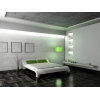|
 Architectural designs are called the chronicle
of the achievements of humankind for a reason. They show the past, reflect the
present, and anticipate the future. Every epoch is forever captured in its architectural
designs. Studying history, you can follow the evolution of architectural styles
and correlate them with the changes in society. Architectural designs are called the chronicle
of the achievements of humankind for a reason. They show the past, reflect the
present, and anticipate the future. Every epoch is forever captured in its architectural
designs. Studying history, you can follow the evolution of architectural styles
and correlate them with the changes in society.
Twentieth century architecture is
distinguished by the exceptional pretentiousness, flamboyancy and
eccentricity
of style which transpired in the eerie designs of Antonio Gaudi, a
recognized
architectural genius of the last century. His works today are regarded
as
masterpieces. Take, for instance, Park Guell, which is not just a
municipal park
in Barcelona, but a world-famous garden complex and a part of UNESCO
heritage
program. Park Guell is skillfully designed and composed to bring peace
and calm
that one would expect of park. The buildings flanking the entrance,
though very
original and remarkable with fantastically shaped roofs with unusual
pinnacles,
fit in well with the use of the park as pleasure gardens and seem
relatively
inconspicuous in the landscape considering the flamboyant design of
other
buildings by Gaudi. The focal point of Park Guell is the main terrace
surrounded by a long bench in the form of a sea serpent (about 200
meters long)
which enables people sitting on the bench to converse privately,
although the
square is large. Roadway in the Park resembles the pine trees of the
area. In
order to fit in, the road and walkway structures between the terraces
were
built with stones quarries within the park. The large cross at the
Park's high
point offers the most complete view of Barcelona. Every day Park Guell
attracts
hundreds of tourists from around the world.
Other world-known architectural structures
designed by Gaudi include Palau Güell, La Pedrera, and Sagrada Familia, a
Roman
Catholic church which begun in 1882 and contentiously scheduled for a
2026
completion. Considered Gaudi's masterwork, the structure features
countless
ornate enclaves, as well as eighteen skyscraping towers. Statues and
subtle
touches abound, making it a small-scale feast as well as a massive
landmark.
Gaudi's vision pervades the aesthetic of Barcelona, with dashes of his
idiosyncratic look appearing throughout. Bold and innovative ideas of
Gaudi were
quickly picked up by his followers around the world, and shortly
afterwards his
influences were observed in every country and every city.
For instance, the world-famous Dubai resort is
often ranked among the cities boasting the most eccentric and futuristic
architectural designs. No wonder, as many Dubai hotels and resorts are
designed
specifically to attract visitors. Eye popping images and unthought-of
intelligence behind the building structures are better seen to be
believed.
Dubai Death star is a design by Rem Koohaas for the RAK convention and
exhibition center takes its inspiration from «death star» in the Star
Wars
epic. A 44-storey circular structure will land on the new artificial
island.
It's a bizarre and imaginative design, and its perception depends on
everybody's
viewpoint. To date, the city already has
several structures that look like architectural marvels, including Emaar
Towers, and Burj al Arab.
Present-day architectural trends feature
innovative engineering ideas, as buildings are not only visually
striking, but
carefully laid out and highly functional. Speaking of functional and
beautiful,
Slovenia architects designed the Lace Apartment 5-storey building, which
reinstates a three-dimensional lace embracing the volume of the
structure. The
lace is transformed into functional architectural elements such as
projecting
roofs, pergolas, dividing walls between apartment terraces and
balconies. This
combination of facade elements function as constant temperature buffer
zone to
the main living and sleeping areas and protect against sudden weather
changes
and strong winds.
Another amazing design concept was created by the
Toronto artist David Trautrimas. The project called Habitat Machines,
which
literally means «inhabited machines», features residential buildings
resembling
everyday objects.
If the creators of the playland at McDonalds
and the leading Japanese architect had a love child, it would be the
Reversible
Destiny Lofts. The philosophy of the architect Shusaku Arakawa was
similar to
that of a kid: he believed that people shouldn't relax at home but
instead be
invigorated by their environment. Painted in eye-catching blue, pink,
red,
yellow and other bright colors, the 9-apartment building resembles the
indoor
playgrounds at fast-food restaurants. Inside, each apartment features a
dining
room with a grainy, surfaced floor, a sunken kitchen and a study with
concave
floor. Electric switches are located in unexpected places on the wall. A
glass
door to the veranda is so small you have to bend to crawl out. Moreover,
there
is no closet space; residents will have to find a way to live here,
since the
apartments offer only a few solutions. The apartments sold for USD
763,000 each.
|